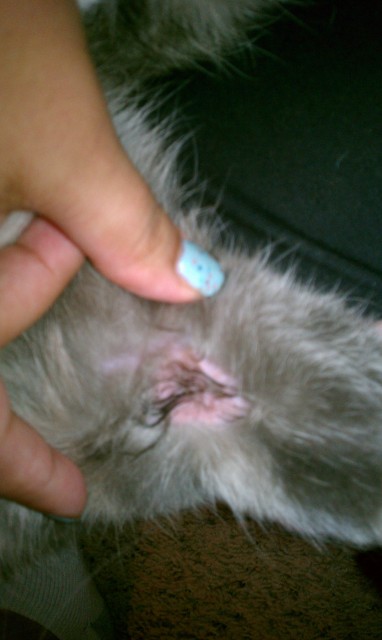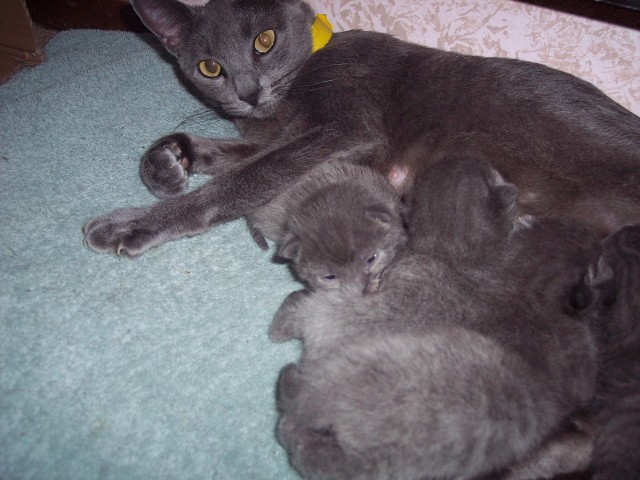QuestionNorman,
We are considering getting another cat from the local Humane Society. We currently have an 8 year old male cat that has been the only pet in our household since we got him seven years ago at the humane society. He is lazy and mild mannered, has been neutered and is declawed on all fours. Are there any recommendations you have for us as to what age and sex of cat might deal well with him? We met a five year old female at the humane society that is really sweet, but she is not declawed at all. Could this be a problem? What is your opinion?
You cannot just reply to this message, you have to send e-mail to mclainggdd@wowway.com
Thanks so much!
Gina
AnswerGina,
Cats need to be introduced very carefully. An older cat will be much more inclined to accept a kitten than another older cat. Generally, if neutered or spayed, gender does not seem to matter. One also must be aware that, like people, some cats just are not going to like each other no matter what, whereas some cats will just love each other. Keep in mind that cats, as creatures of habit, do not like to have their lives disrupted. So, you must take into account that your 8 year old has been ruling the roost for 7 years and may not take kindly to an interloper in his domain.
Having said that, if you want a buddy for your boy, it should be a kitten (4-6 months of age is a good age) preferably already neutered or spayed (cats can be neutered or spayed safely as young as 12 weeks of age).
If you do get another cat, here is a technique we have used and had our pet buyers use for introducing a new cat or kitten into a household with and already established pet:
Start out your new cat or kitten in one room with a litter pan and water dish. Ideally, the one room should be a bedroom with yourself or another human resident. This accomplishes a couple of things. Your new cat or kitten will not be overwhelmed by its new surroundings and get "lost", and thusly will have no problem finding the litter pan (often kittens or rescue cats have been confined and are somewhat daunted by wide open spaces!). You will feed the new cat or kitten in this room and keep the established cat out. It allows the new cat or kitten to bond with you or another human being and also build up some self assurance in its new surroundings since it will not have to compete for food or attention right away. Finally, it allows the new cat or kitten and the established cat to sniff each other under the door and get familiar with each others' scents.
After 3-5 days of being in its one room, it is time to let them meet each other. Be prepared for some posturing, some spitting and hissing, and the like. IGNORE IT! After a while, they should begin chasing each other about and still have the occasional hiss or spit as they get acustomed to each other. Cats tend to make a whole lot of noise and even loosen up some fur. Rarely will two cats hurt each other.
Once they are introduced, there are a couple of things you must remember. Do not separate them again, they will get along! Do not interfere in their "discussions" as they need to sort it out amongst themselves!
It does not hurt to give the established cat treats and extra attention after the new cat or kitten is introduced (yes, cats do get jealous!).
A couple of things you may have to do are to feed them on separate dishes. Provide more than one litter pan in different areas of the household (as cats can be very territorial about litter pans).
All, in all, this method seems to have had great success in the past and makes for a fairly smooth introduction. Please remember that they may make up immediately, or it may take a few weeks.
Good luck & best regards... Norm.

 Cat peeing on floor after other cat died
Question
My babies
I have a 6 year old tabby (my
Cat peeing on floor after other cat died
Question
My babies
I have a 6 year old tabby (my
 Small bald spot?
Question
Chibi arm
I was playing with my almost
Small bald spot?
Question
Chibi arm
I was playing with my almost
 albinism
Question
Cat
Hello! I was wondering if you could
albinism
Question
Cat
Hello! I was wondering if you could
 My cat is loosing hair .
Question
A picture of the probl
My cat is loosin
My cat is loosing hair .
Question
A picture of the probl
My cat is loosin
 russian blue gene info
QuestionBlue Mom & kittens
QUESTION: I am fo
russian blue gene info
QuestionBlue Mom & kittens
QUESTION: I am fo